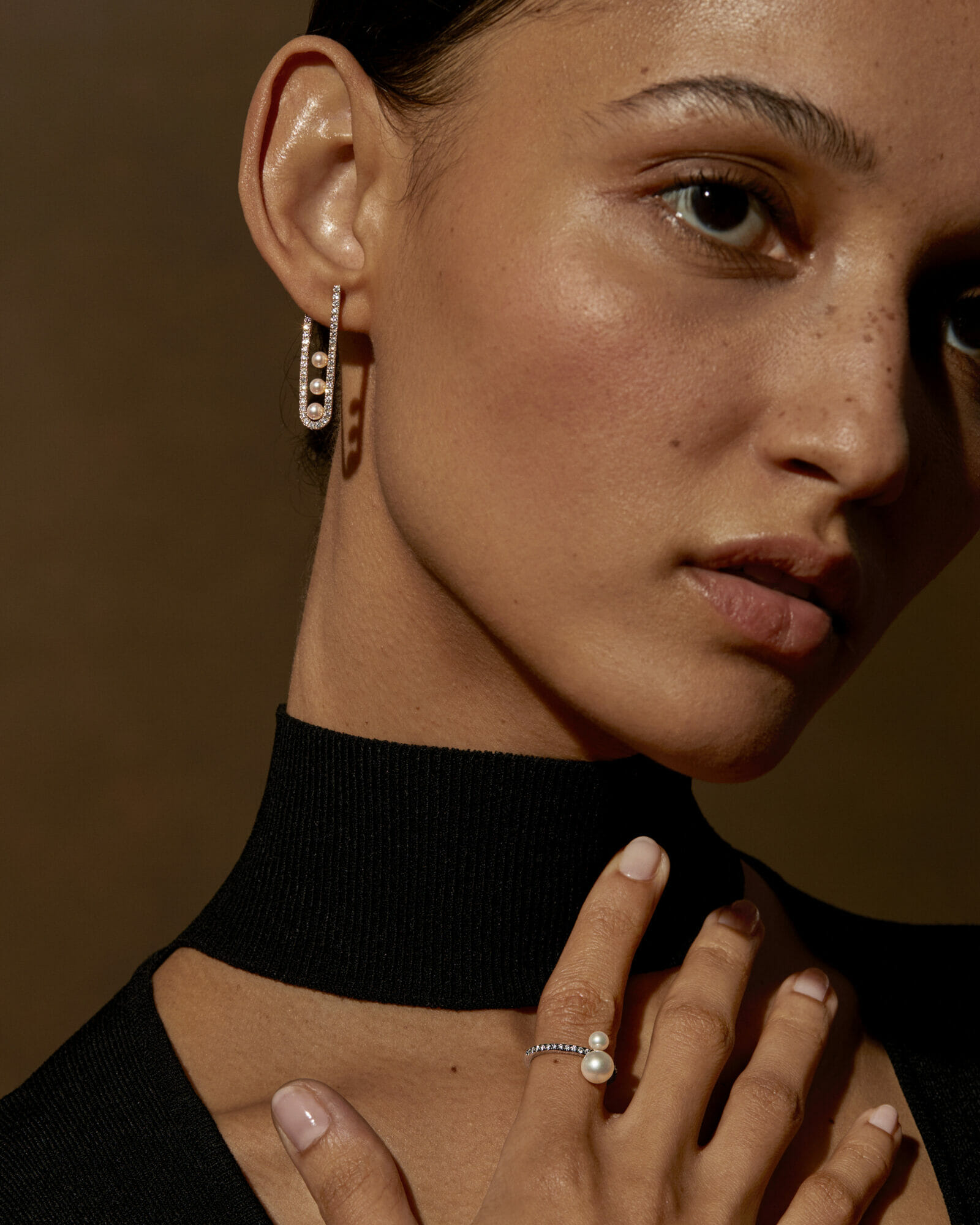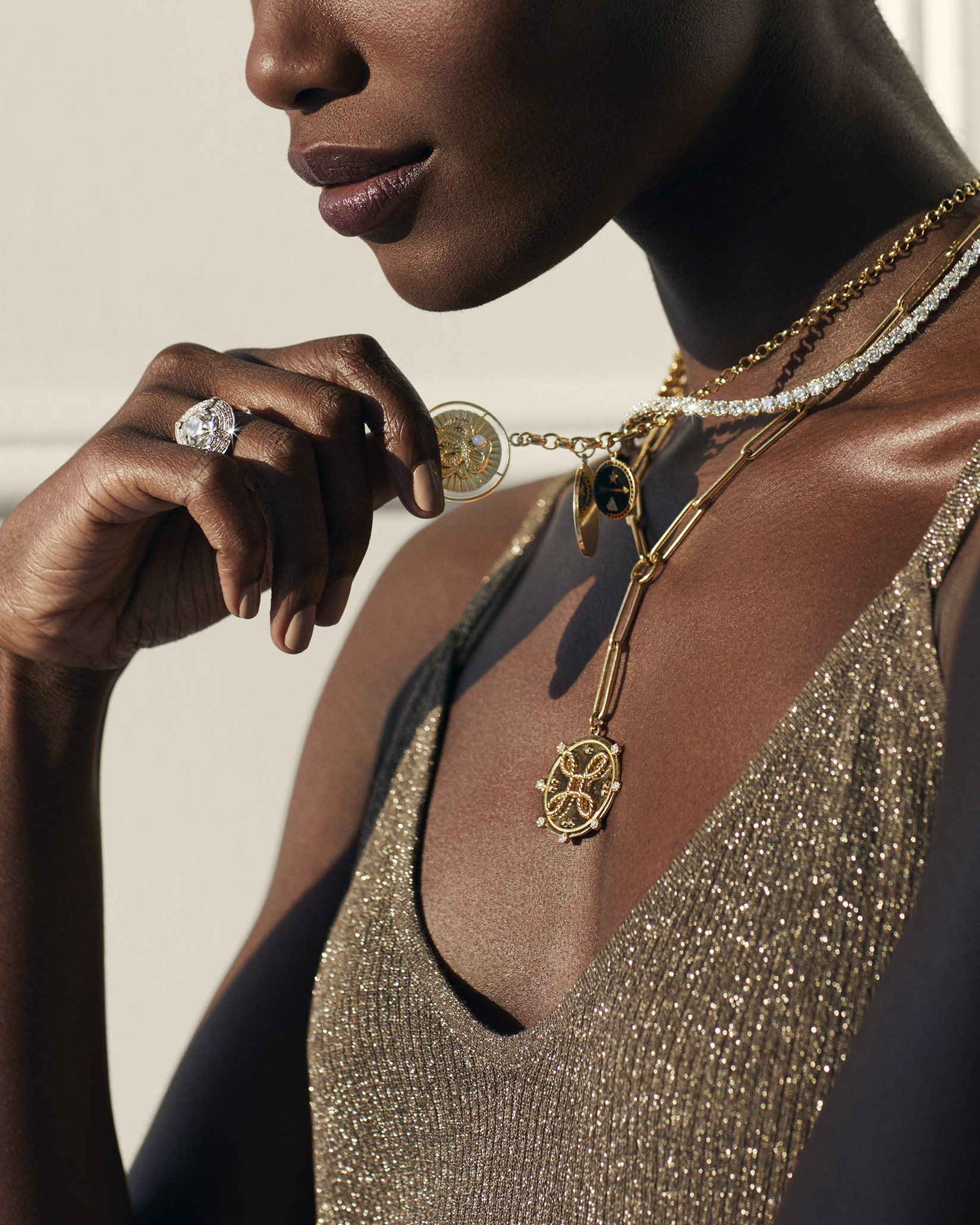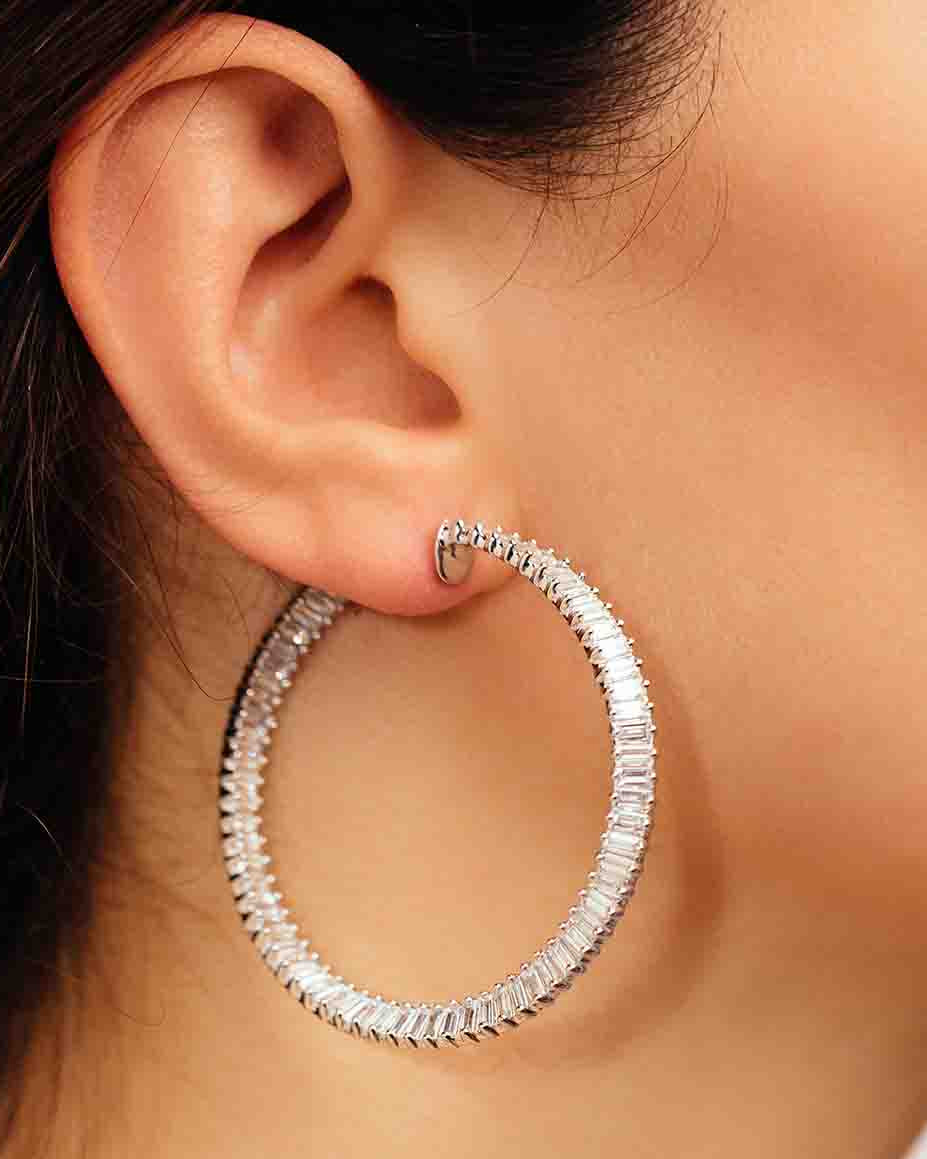Everything You Need to Know About Diamond and Yellow Gold Engagement Rings


Choosing the precious metal for your setting is one of the most vital decisions when purchasing a diamond engagement ring. Yellow gold is experiencing a significant resurgence in popularity after long-standing preferences for platinum and white gold. Yellow gold engagement rings provide an ideal mix of aesthetic appeal and long-lasting practicality through their enduring luster and exceptional durability.
However, not all gold is created equal. Selecting the perfect yellow gold engagement ring with diamonds requires knowledge of different gold types and the ability to choose the one that is best for you. Ahead, learn more about the benefits of yellow gold engagement rings and get inspired by styles from some of our favorite designers.
Meet the Expert

- Grant Mobley is the Jewelry & Watch Editor of Only Natural Diamonds
- He is a GIA Graduate Diamonds Graduate
- He has over 17 years of jewelry industry experience, starting with growing up in his family’s retail jewelry stores
Why Choose Gold Engagement Rings?
Let’s start with the basics of yellow gold engagement rings: Yellow gold is gold as it naturally exists. The genuine color of pure gold appears as the iconic warm golden hue. Yellow gold maintains its color naturally without requiring alloy mixtures or rhodium plating, which white gold needs to achieve its silvery-white appearance. The choice of metal becomes especially important when selecting a ring designed for everyday wear throughout your lifetime. A subtle patina that develops on the metal also enhances its charm without reducing its beauty. Yellow gold often stands up better over time than white gold, representing a wise choice for diamond engagement ring purchases.
Why Gold Engagement Rings Can Be a Savvy Choice
Here’s another yellow gold advantage that surprises people: Yellow gold engagement ring settings can save you money because they work well with warmer-toned diamonds. Yellow gold settings match well with warmer diamonds on the lower end of the GIA color scale, with grades such as J, K, and L because these stones possess yellow undertones. The bonus is that these diamonds are usually less expensive when compared to higher color grades yet display exceptional beauty when paired with yellow gold settings. The interplay between the diamond’s warmth and the yellow metal creates an alluring effect while letting you focus on natural diamonds based on cut, carat weight, and clarity without breaking the bank.
Warm diamond colors become more noticeable when paired with white metals such as platinum and white gold; therefore, yellow gold engagement rings allow you to choose a diamond with a lower color grade to maximize your investment.
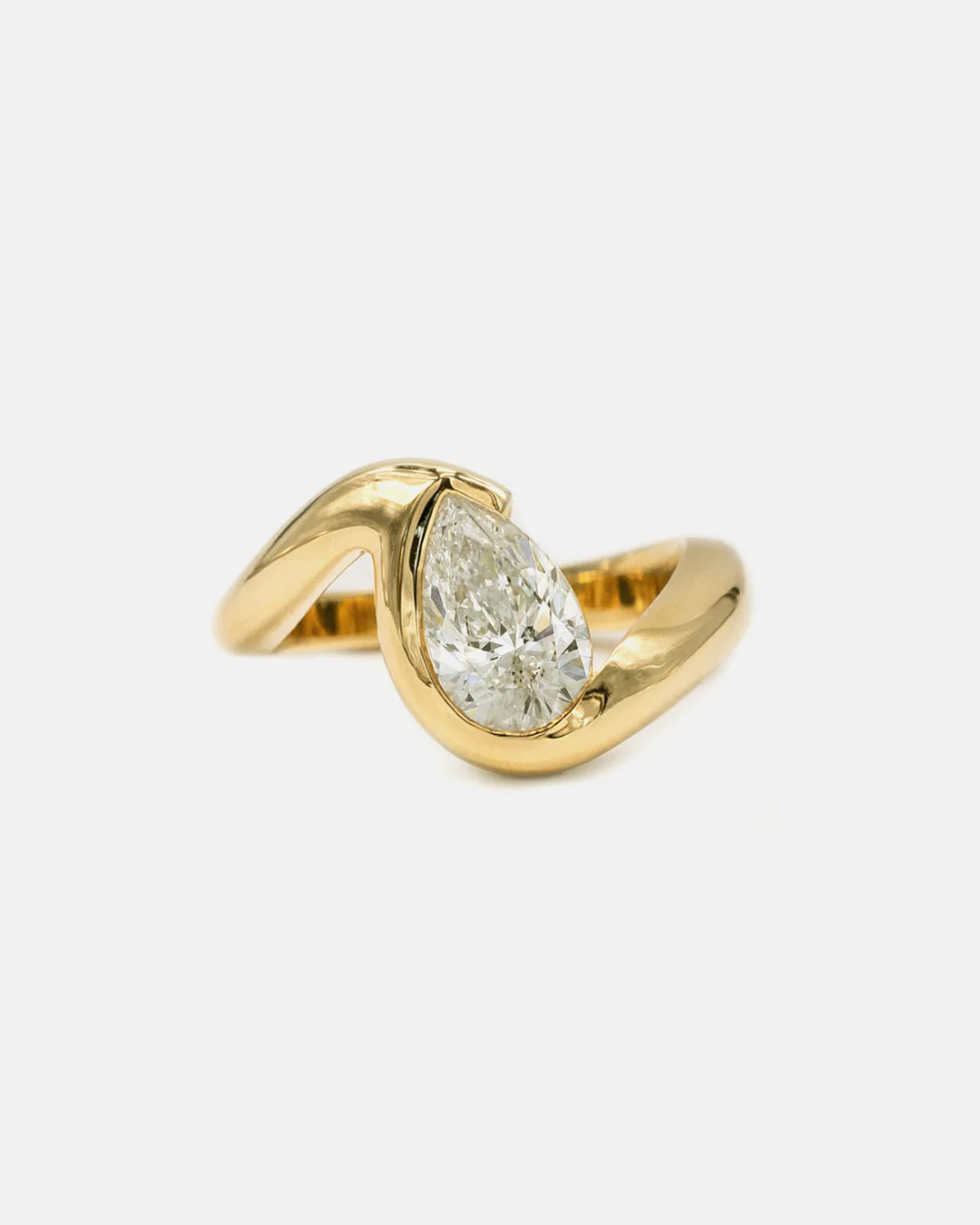

Solid Gold vs. Plated: What’s Best for Engagement Rings?
Understanding the various types of gold is essential before you select your final piece. The gold you choose will significantly affect your ring’s value, durability, and appearance.
Solid Gold (Recommended for Gold Engagement Rings)
Solid gold is exactly what it sounds like: a gold alloy without any base metal underneath. It’s available in several karat options:
18k yellow gold is 75% pure gold, making it a perfect choice for sophisticated jewelry designs. Its rich, saturated color provides top-notch durability for everyday use and makes it a more luxurious option.
14k yellow gold has a gold content of 58.3% and is alloyed with metals such as silver and copper. Its added durability and slightly lower cost compared to 18k make it the most frequently chosen karat purity.
10k yellow gold offers affordability and durability because it comprises 41.7% pure gold. The increased amount of alloy metals within this material results in a paler yellow shade but slightly enhances its resistance to scratches and dents. Its lower purity level results in a less intense yellow color than traditional fine jewelry enthusiasts expect. People sensitive to metals might experience skin irritation from its increased alloy content. Many people consider 10k gold less luxurious than 14k or 18k gold.
For diamond and yellow gold engagement rings, solid gold is the only material designed to endure throughout your lifetime.

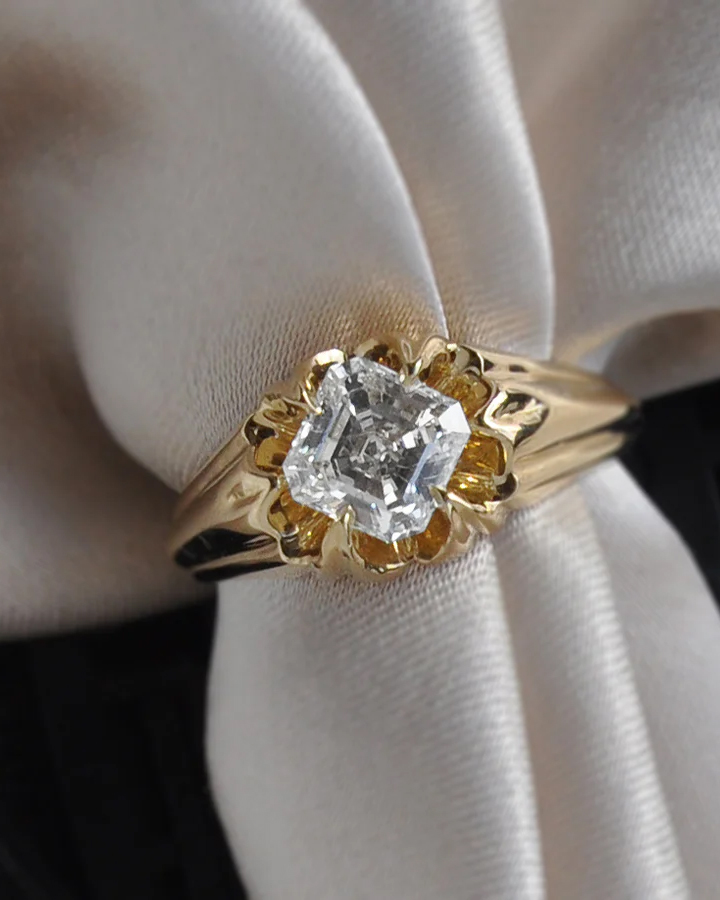
Gold-Filled
In gold-filled jewelry, a thick layer of gold is mechanically attached to a brass base metal. This process makes the jewelry more durable than gold plating, making it suitable for costume pieces. However, it does not meet the standards for a gold engagement ring or fine jewelry.
Gold Vermeil
Gold vermeil combines sterling silver with a gold coating applied through electroplating. Although it surpasses gold-plated jewelry in durability, the gold layer will eventually wear away through regular use. Engagement rings require durability, so gold vermeil is unsuitable for these pieces.
Gold-Plated Jewelry
Gold-plated jewelry consists of a base metal such as copper with a thin gold coating. This option provides the lowest cost but has poor durability. Gold-plated jewelry should not be used as engagement rings because the gold will wear away, and the base metal beneath can cause skin reactions or discoloration.
Which Karat Is Right for You?
When choosing a solid yellow gold engagement ring, you will probably need to choose between 14k and 18k gold. Your choice between the two options depends primarily on your budget and personal preferences. While both are excellent choices, 18k gold offers a richer hue and higher gold content—making it more expensive—while 14k provides added strength and resilience for everyday wear at a more accessible price point.
Shop Yellow Gold Engagement Rings
Get inspired by yellow gold engagement rings from some of our favorite designers.
Final Thoughts on Choosing a Gold Engagement Ring
Yellow gold has an everlasting appearance, provides an inviting setting for less expensive diamonds, and maintains its beauty with minimal maintenance. A natural diamond formed deep inside the Earth over billions of years is a perfect match for gold in its purest form.
Just remember: if you want a ring that’s an heirloom and will last a lifetime, invest in a solid gold engagement ring, and take the time to understand which karat suits you. It’s a decision that should feel as good years from now as the day you say “yes.”














